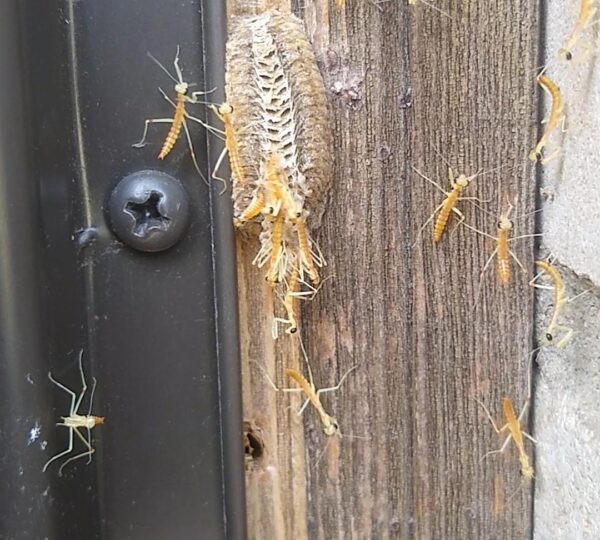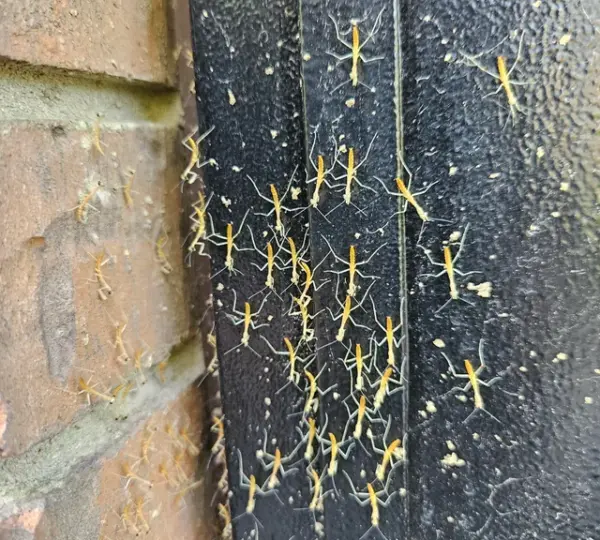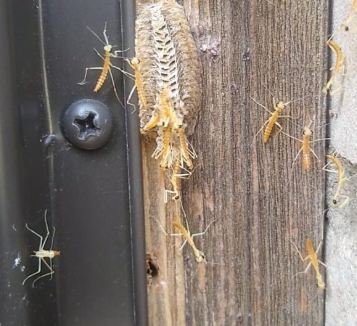One quiet morning, as I opened my front door, I was surprised to see dozens of baby praying mantises crawling around the doorstep. These tiny insects, no bigger than my pinky finger, had just hatched from an egg case known as an ootheca. The female mantis carefully attaches this foam-like case to sturdy surfaces such as branches, walls, or fence posts, where it protects up to a hundred developing eggs from cold and predators until they are ready to hatch in the warmth of spring. Praying mantises are instantly recognizable by their unique “praying” posture, with their forelegs folded as if in meditation. They are remarkable hunters who play an important role in nature by controlling pests like flies, mosquitoes, aphids, and caterpillars. Their large compound eyes can move independently, giving…
One quiet morning, as I opened my front door, I was surprised to see dozens of baby praying mantises crawling around the doorstep. These tiny insects, no bigger than my pinky finger, had just hatched from an egg case known as an ootheca. The female mantis carefully attaches this foam-like case to sturdy surfaces such as branches, walls, or fence posts, where it protects up to a hundred developing eggs from cold and predators until they are ready to hatch in the warmth of spring.
Praying mantises are instantly recognizable by their unique “praying” posture, with their forelegs folded as if in meditation. They are remarkable hunters who play an important role in nature by controlling pests like flies, mosquitoes, aphids, and caterpillars. Their large compound eyes can move independently, giving them almost a 360-degree view of their surroundings. When prey comes near, they strike quickly and precisely, capturing their target with their spiny forelegs.
Watching these tiny hatchlings explore and scatter was a magical experience — a glimpse into the beginning of their journey in the natural world. Some clung to the brick wall, while others disappeared into the nearby plants, blending seamlessly with the greenery. It was a quiet but powerful reminder of life’s continuous renewal.

If you ever come across mantis hatchlings near your home, it’s important to observe them gently without touching, as they are fragile. Avoid using pesticides in the area and leave shrubs or plants nearby to provide shelter from birds and ants. Over time, these tiny mantises will molt several times before growing into adults.
Beyond their ecological role, praying mantises have deep cultural significance in many parts of the world. In Chinese tradition, they symbolize patience and mindfulness. In African cultures, they are seen as bearers of good luck and wisdom. Native American stories often describe them as teachers of calm awareness and intuition. Their presence encourages us to slow down, breathe, and trust the natural flow of life.

That morning’s encounter with the mantis hatchlings was more than just a simple event — it was a meaningful reminder that nature’s miracles often happen quietly around us. Life constantly renews itself in small, hidden ways, and if we pay attention, we can witness these wonders every day.

Leave a Reply